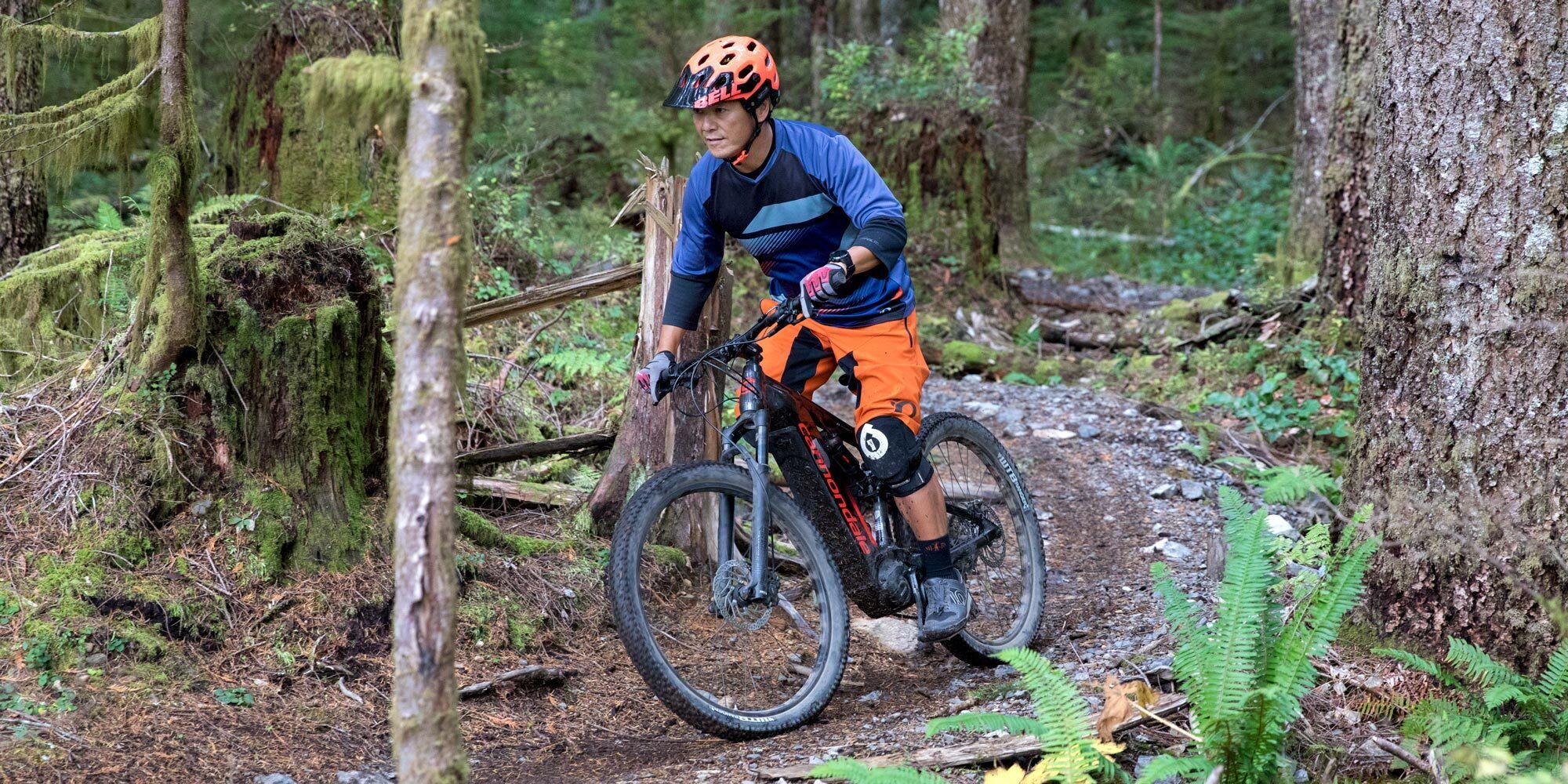The first thing you need to know about riding an electric mountain bike (e-MTB), is where you can ride it. (The International Mountain Bicycling Association (IMBA) has an E-MTB Identification Guide to help riders understand the different types of electric mountain bikes (e-MTB) and where you can ride them. People for Bikes has also started cataloging rides on its eMTB Map.)
Once you've found your trail, you'll need to ride your pedal-assist dynamo a little differently than you would ride a standard mountain bike.
If you're shopping for an e-MTB, our article How to Choose an E-Bike offers general buying tips. A big motivation for getting an electric mountain bike is to extend your riding options: You can go on longer, steeper trails or ride your favorite route twice instead of just once. An e-MTB also makes it possible to reach trail systems you might otherwise have accessed only via a ski lift or a vehicle.
Following are some additional tips for riding an electric mountain bike.
Ride with a Faster Cadence
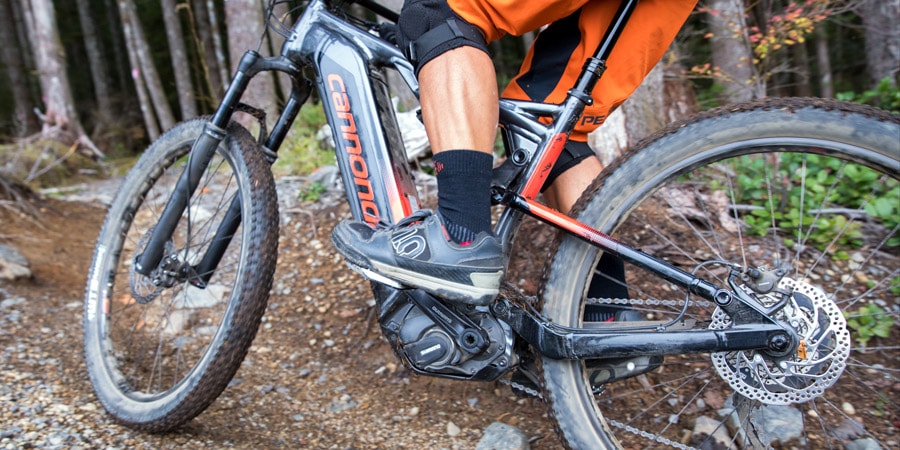
A big benefit of an e-MTB is enhanced climbing power (torque). The pedal-assist motor will deliver more torque more quickly if you spin the crank arms faster—at a higher cadence. Cadence varies with personal preference; a typical bike rider might average 30 to 40 rpms (revolutions per minute), while an e-MTB rider would want to be in the 50 to 60+ rpm range. A faster cadence makes for a more efficient motor (extending battery life) and provides a more natural pedal-assist feel as you ride.
Watch Out for Pedal Strikes
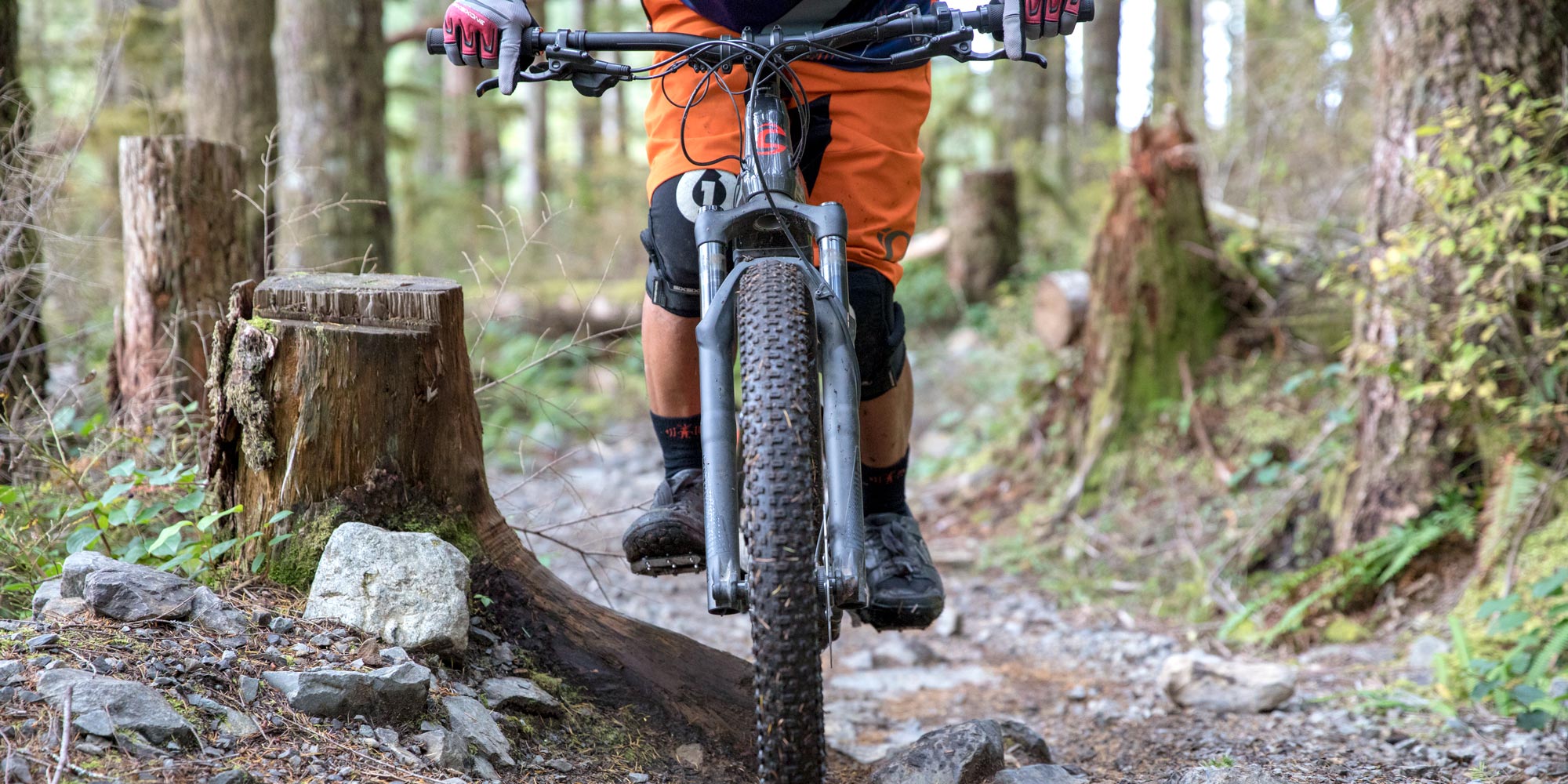
Rocks, roots, ruts and the like can all catch the bottom of your pedal on downstrokes. And a faster cadence means more downstrokes per ride, so you need to be vigilant. That means picking your line carefully and negotiating sketchy sections by coasting with pedals at the same level or using a ratcheting motion where you spin the pedals back as soon as the leading pedal is level with the rear pedal.
To help you avoid this fate, many e-MTBs come with shorter crank arms than their conventional mountain-bike counterparts. Initially, using a faster cadence with a shorter crank arm can feel a little bit like you're on a little kid's bike, cranking its tiny wheels at a million rpms. After you ride for a little while, though, things will feel more natural.
Go Easy on Turbo Power
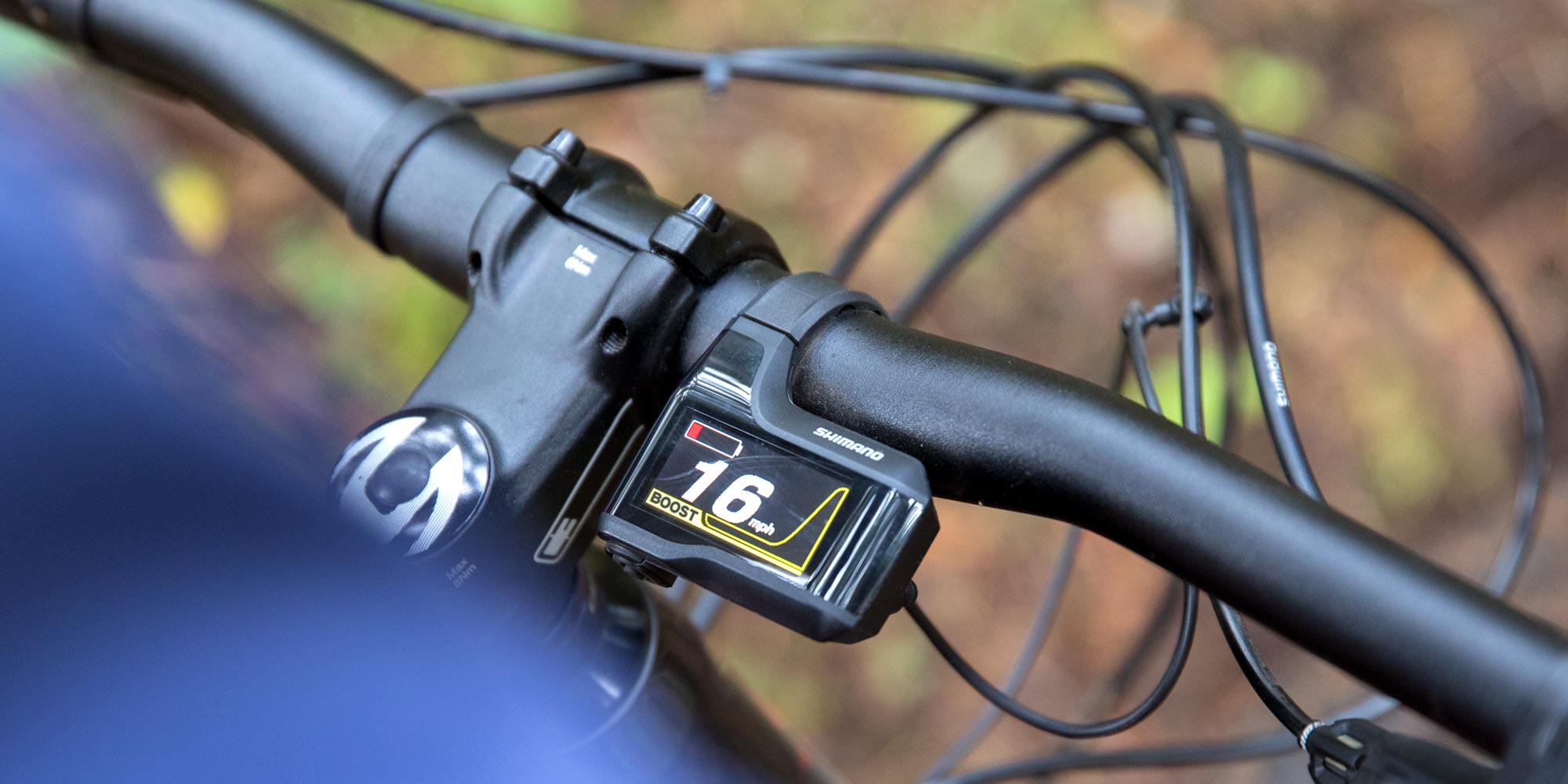
Riding in the highest power setting (terms for it vary on different bike brands) is a quick way to suck the life out of your battery, so use turbo power judiciously. Most riders save it for the steepest pitches on the trail.
One unintended consequence of jumping into the top power setting on a steep climb is that you can actually flip yourself backward. So experiment with different settings on your first few climbs to get a feel for which setting works best at each level of trail incline. You should also lean forward more and slide forward on your seat.
Brake Earlier and Anticipate More
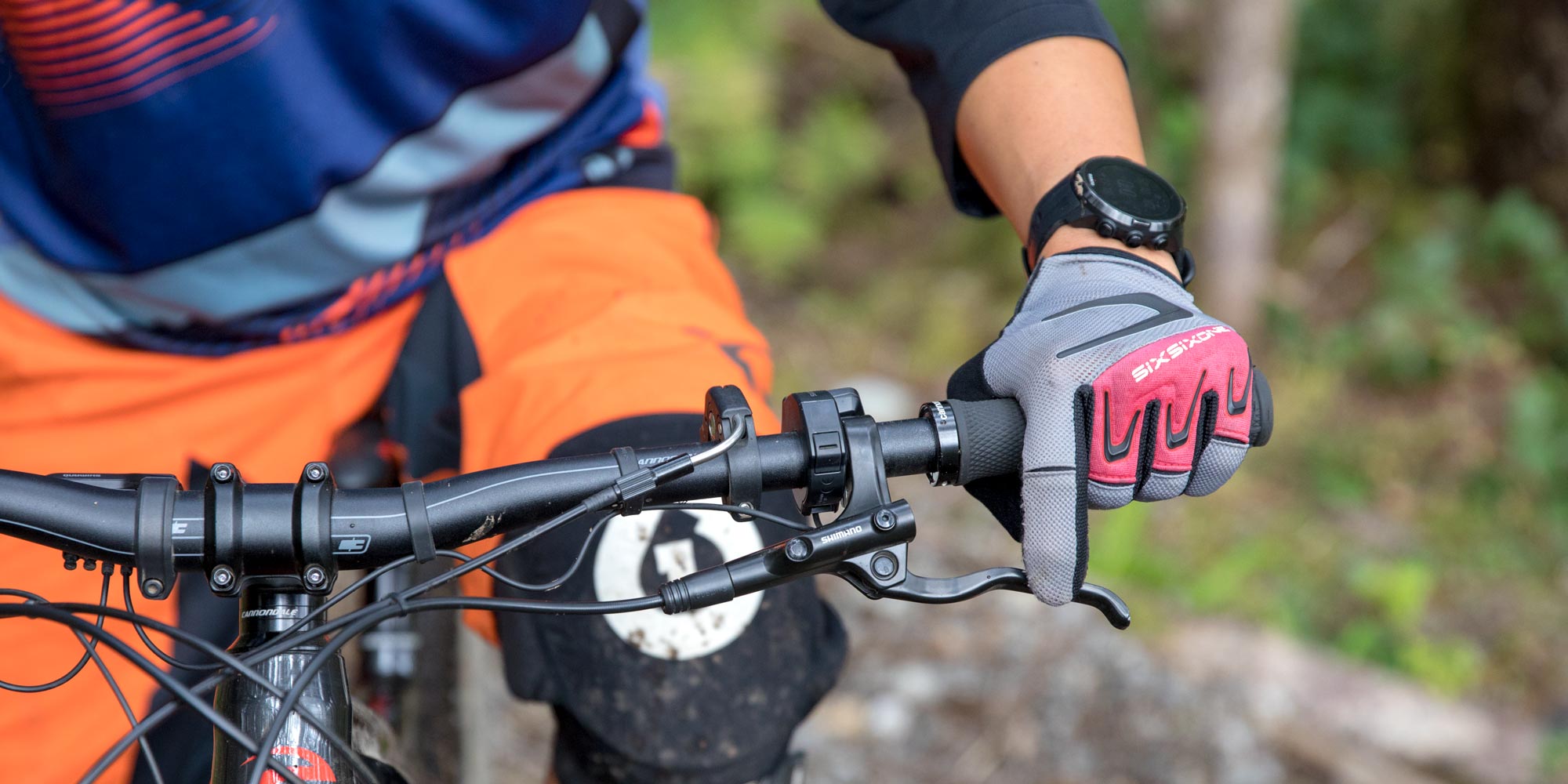
The addition of a motor (and battery) makes your e-MTB both heavier and faster, so you need to brake earlier ahead of turns or any time you want to dump speed. The pedal assist also makes it easier to carry more speed through a turn, so lean over more on your turns.
Because assistance slows when your pedaling slows and stops altogether when you stop pedaling, you also have to be more mindful about places you want to carry momentum. So keep your cadence up whenever you approach an uphill (so you don't stall) or a berm (so you can slingshot around it).
Master Your Ground Game
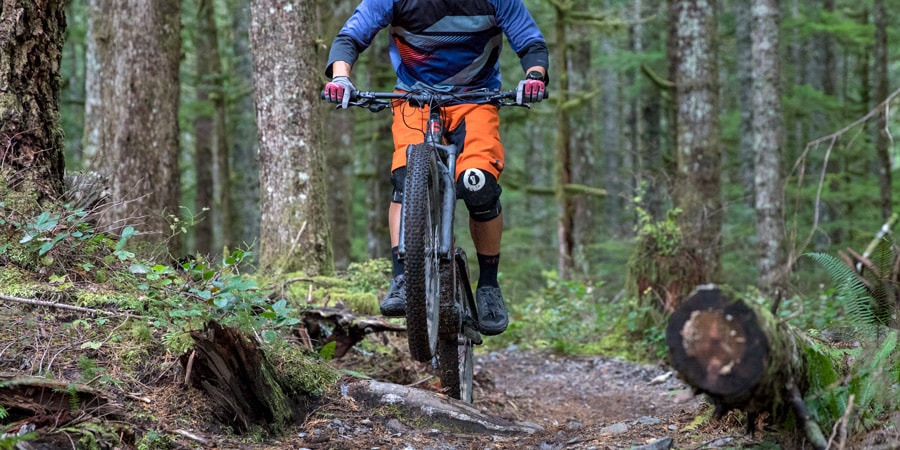
Having a heavier bike overall means that it follows the contours of the ground more closely: You'll roll over obstacles you might have jumped on a conventional mountain bike, for example. And, when you do jump, you'll drop more quickly.
More weight on an e-MTB also translates to more traction. That can be a plus when you hold contact in places where your pedal-only bike used to skid. Whether you view it as good or bad, it's something to factor in throughout your ride.
Be a Good Ambassador
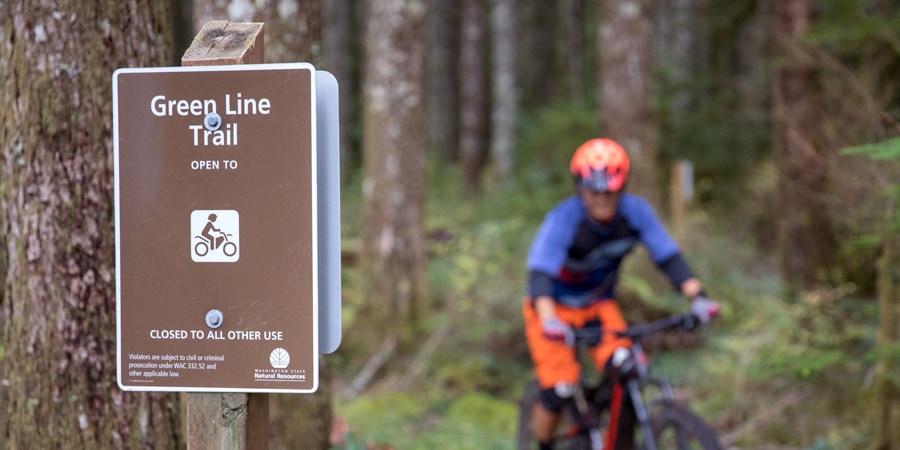
Laws and rules for both urban e-bikes and e-MTBs are evolving. It's safe to say, though, that a lot of other trail users are skeptical about sharing their realm with electric mountain bikes. Some view any motor assistance, even pedal-only assist, as grounds for labeling e-bikes as "motorcycles" and limiting them to ORV areas. Many longtime mountain bikers worry that years of working to gain acceptance will be undermined.
| Ride your e-bike responsibly. Always check the land manager's current rules on where your e-bike class can ride. |
So when you ride, double-check that the most current trail rules allow e-MTB access. Make a point to yield often to other trail users and to slow down when you approach them from behind. Even better, volunteer your time to help maintain trails in your area; that will build goodwill and help ensure those trails are in good shape for all users.
